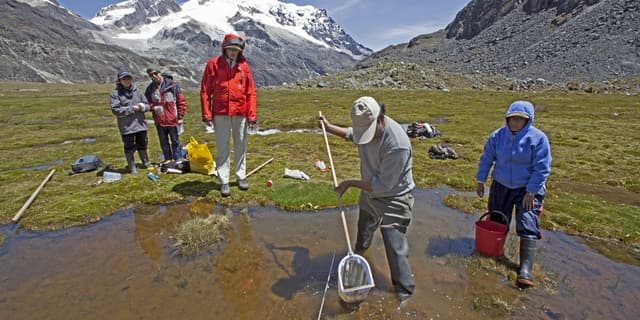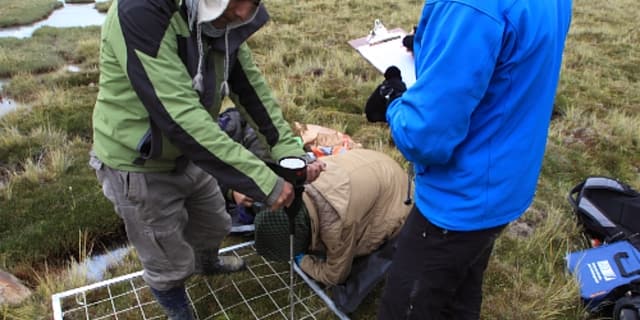Rising temperatures are melting the Andean glaciers. Their long-term disappearance could threaten the wet zones located downstream, which are the ecological sentinels of climate change.

Bofedales are ideal ecosystems for studying climate change and its impact on biodiversity. These wetlands or bogs in the Andes, situated at an altitude of 3200 to 5000 m, depend on precipitation and glaciers to provide their water. “We studied the geographical evolution of the glaciers and of these wetlands from 1984 to 2011, using satellite images”, explains glaciologist Antoine Rabatel. The glaciers had already lost 35% of their surface area during this period, and the zones where snow and ice accumulate have disappeared for glaciers below the altitude of 5400 m. However, these glaciers help to supply the bogs downstream.”
In the space of 30 years, the surface of the bofedales has increased by 300% in response to a heavy and regular inflow of water, coming particularly from the accelerated melting of these glaciers and from the intensified inter-annual variation in precipitation.
However, this phenomenon will not last. The wetlands will shrink as the glaciers disappear, due to temperatures increasing by up to 5°C by the end of the century, according to certain scenarios. Around 85% of them are expected to dry up in a few decades, and 8.5% will dry up to various degrees in the coming years. “We do not yet know this tipping point which will provoke the shrinking of wetland surfaces,” states ecologist Olivier Dangles. The lowest bofedales in terms of altitude will be the first affected. This situation is worrying, because they are unique areas of biodiversity in this arid, high-altitude zone. They are also useful for the people who graze their animals there.”

As well as increasing temperatures, the wetlands are also facing overexploitation due to anthropic activities. Traditionally, people take their llamas there. These have gradually been replaced by sheep and cattle, which do more damage to the surface of the soil. Today, improving management of these fragile spaces is the key factor in preserving them. “Studying the geographical evolution of wetlands is one of these management tools. Thanks to the information collected, we presented a vulnerability map of these spaces to local actors,” states Antoine Rabatel. “This is a first step, which highlights a danger. It would be ideal in the future to develop more integrated management of the wetlands, taking into account climate change.”
Local livestock farmers are now aware of the fragility of their ecosystem, particularly in droughts. They take turns to graze their animals in the wetlands, or install protective barriers to avoid too much degradation of the flora.